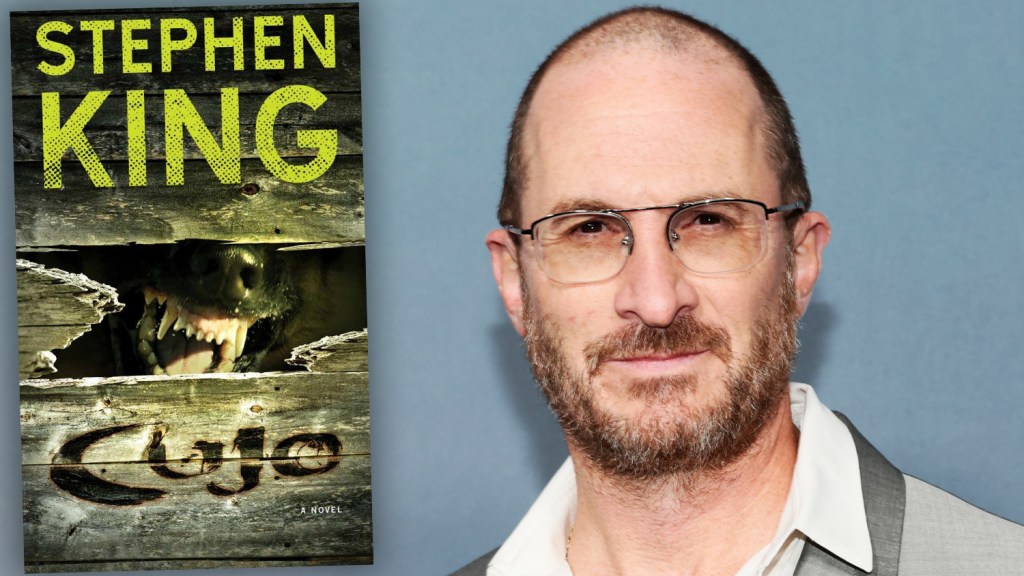Inside the Mind of Horror: Exploring Darren Aronofsky’s Vision for Netflix’s ‘Cujo’
Renowned filmmaker Darren Aronofsky has always been known for his unique storytelling style, characterized by deep psychological exploration and a visceral approach to horror. As he prepares to adapt Stephen King’s classic horror novel ‘Cujo’ for Netflix, fans are eager to see how his vision will reinterpret this chilling tale of terror. This adaptation promises not only to capture the essence of the original story but also to delve deeper into the psychological horrors that lie beneath the surface, captivating audiences in a way that only Aronofsky can.
The Original ‘Cujo’: A Brief Overview
Before diving into Aronofsky’s vision, it’s essential to understand the source material. Published in 1981, ‘Cujo’ tells the harrowing tale of a rabid dog and the family that encounters it. The narrative follows a mother and her son, trapped in a broken-down car while being pursued by a once-beloved pet turned monstrous. At its core, ‘Cujo’ is not just a story about a killer dog but a profound exploration of fear, isolation, and the fragility of human relationships.
Psychological Depth in Horror
One of Aronofsky’s hallmarks is his ability to explore the psychological depths of his characters. Films like ‘Black Swan’ and ‘Requiem for a Dream’ showcase his talent for weaving complex narratives that delve into the human psyche. In ‘Cujo,’ he is likely to expand on the internal struggles of the characters, amplifying their fears and vulnerabilities against the backdrop of the physical threat posed by the rabid dog.
- Fear of the Unknown: Aronofsky might explore the fear that comes from being trapped, not just physically but also emotionally. The characters’ backstories could reveal deeper fears related to their relationships and personal failures.
- Isolation: The setting—a car in a deserted area—could symbolize emotional isolation, reflecting the characters’ inner turmoil and sense of helplessness.
- Transformation: The transformation of Cujo from a gentle pet to a terrifying monster can be paralleled with the characters’ transformations under stress, showcasing how fear can change individuals.
Darren Aronofsky’s Unique Approach
What makes Aronofsky’s adaptation of ‘Cujo’ particularly exciting is his approach to horror. Unlike traditional horror films that rely heavily on jump scares and gore, Aronofsky’s films often focus on building a sense of dread and existential anxiety. His ability to create tension through atmosphere and character development sets him apart.
Creating an Atmosphere of Dread
In ‘Cujo,’ Aronofsky might use his signature techniques to create a palpable sense of dread. Through cinematography, sound design, and pacing, he can immerse audiences in the psychological horror of the situation. Here are some potential elements of his approach:
- Visual Symbolism: Expect powerful imagery that symbolizes the characters’ internal struggles, perhaps using Cujo as a representation of their darkest fears.
- Soundscapes: Aronofsky has a knack for creating unsettling soundscapes. The growls of Cujo, the heartbeat of the characters, and the surrounding silence can all contribute to a sense of inescapable fear.
- Non-Linear Storytelling: To enhance the psychological aspect, Aronofsky may employ non-linear storytelling, revealing backstory elements interspersed with the present-day horror, deepening character development and emotional engagement.
Thematic Exploration in ‘Cujo’
While ‘Cujo’ primarily presents a physical horror story, Aronofsky’s adaptation is expected to explore a variety of themes relevant to contemporary audiences.
Motherhood and Protection
At the heart of ‘Cujo’ is a mother’s instinct to protect her child. Aronofsky can delve into the complexities of motherhood, examining the lengths to which a mother will go to safeguard her offspring. This theme resonates powerfully in today’s societal landscape, where the challenges of parenting are ever-present.
The Nature of Fear
Fear is a central theme in many horror stories; however, Aronofsky’s exploration may provide a nuanced view of fear itself. Rather than merely portraying fear as something to be fought against, this adaptation could probe into how fear can shape individuals, influence decisions, and alter perceptions of reality.
Anticipating the Cast and Crew
While specific casting details are yet to be announced, the selection of actors who can convey deep emotional turmoil will be crucial. Aronofsky has previously collaborated with powerhouse performers like Natalie Portman and Jennifer Lawrence, who have delivered unforgettable performances under his direction. Fans are hopeful that he will choose actors capable of portraying the intense psychological and emotional struggles inherent in ‘Cujo.’
Collaboration with Cinematographers and Composers
The visual and auditory elements of ‘Cujo’ will be pivotal in creating Aronofsky’s unique horror experience. Collaborating with talented cinematographers and composers will allow him to craft a film that is as haunting to watch as it is to listen to. Expect a visually stunning film that employs innovative techniques to enhance the storytelling.
Conclusion: A New Dawn for ‘Cujo’
Darren Aronofsky’s vision for Netflix’s ‘Cujo’ promises to be a fresh and thought-provoking take on Stephen King’s classic horror story. By focusing on the psychological aspects of fear, isolation, and motherhood, he aims to transcend conventional horror tropes, creating a narrative that resonates with audiences on multiple levels. As fans await this adaptation, the anticipation for a film that melds Aronofsky’s artistic vision with King’s gripping narrative is palpable. In a world that often feels surreal and terrifying, ‘Cujo’ could serve as a mirror reflecting our own fears and vulnerabilities, making it a timely exploration of what it truly means to be human.
See more CNET Live

